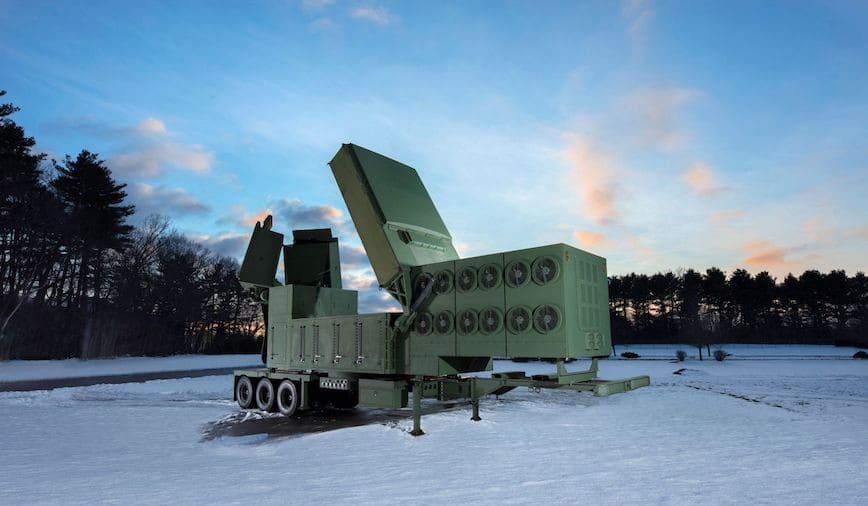The U.S. Army has awarded Raytheon, an RTX business, a $1.7 billion contract modification to produce the Lower Tier Air and Missile Defense Sensor, the radar chosen to replace the Patriot system’s legacy sensor.
Defense officials confirm the award followed an Aug. 28 Pentagon contract posting and moves the radar program deeper into low-rate initial production with delivery milestones tied to the Army’s modernization plan. The action raises the total face value of the current production contract to about $3.8 billion and sets work through the end of 2029 at Raytheon’s facility in Andover, Massachusetts.
Contract modification details and funding obligations
According to the Pentagon’s contract notice, the Army obligated two funding lines at award. One covers U.S. procurement in fiscal 2025 missile procurement accounts, the other draws from fiscal 2025 Foreign Military Sales funds linked to Poland.
The obligation amounts are specific, not estimated. They total $435.690 million from the Army line and $397.410 million from Poland’s FMS case. Army Contracting Command at Redstone Arsenal is identified as the contracting activity, which fits the programs long-running acquisition path under the service’s air and missle defense portfolio.
This is a production modification rather than a new start. It authorizes additional low-rate quantities already cleared by the program office earlier this year. It also aligns with Army budget documents that point to sustained procurement as the service moves Patriot battalions onto the new sensor. The schedule in the award points to completion by late December 2029.
Tom Laliberty, president of Raytheon Land and Air Defense Systems, said the award reflects demand for a 360-degree radar in formations facing larger and more complex raids. This contract highlights the need for LTAMDS amid increasingly complex and large raid threat tactics and underscores the U.S. Army’s confidence in the system’s advanced 360-degree integrated air and missile defense capability,” he said. In a separate comment, he noted the program crossed Milestone C earlier this year and the company is ramping production to meet U.S. and allied orders.
Production schedule unit totals and Poland orders
The Army’s first low-rate lot comprises roughly 10 radars. Program plans call for 94 U.S. radars across the life of the effort, which covers replacing Patriot radars in active and National Guard units over time as production matures. Poland has 12 LTAMDS on order under its Wisła Phase II package, making it the first foreign customer for the sensor. The contract modification announced this week supports both U.S. and Polish quantities, which is why the obligations reflect a split between Army procurement and Poland’s FMS funds.
Production today requires about 40 months per radar on the line, according to program officials, with a formal objective to cut that to 36 months. The Army and Raytheon have brought in outside supply-chain expertise to pull that cycle down without risking test exit criteria or pre-fielding reliability checks.
That work focuses on gallium nitride module flow, sub-array build pacing, power system availability and transportation fixtures that set the tempo of final integration. None of those pieces move quickly if a vendor falters, so the team is addressing long-lead items early in the build.
The service is tracking to field initial sets to operational units as production deliveries align with training and spares. It is a staged rollout, not a single-event fielding. U.S. deliveries remain the pacing element, while Poland’s 12 radars follow a parallel line, sharing some sub-tier vendors and test assets but with distinct configuration control under the FMS case.
Testing milestones and Guam evaluation timeline
The Army approved low-rate production in April after the program achieved Milestone C. Before that decision, LTAMDS completed eight major flight tests and logged about 10,000 hours of other test activity, including radiate time, track development, and environmental runs in wind, rain, and dust. Soldiers also put the radars through road marches and rough handling to check for cable, mast and array issues that tend to appear only under stress. That test record, while not the end of evaluation, gave the green light to begin building low-rate units while the system keeps maturing.
A key near-term event is the initial operational test and evaluation window, now planned for the fourth quarter of fiscal 2026. That formal IOT&E will measure operational suitability and effectiveness in a battalion context with live operators, the command network, and mixed threat presentations. Results from IOT&E inform the full-rate production decision now targeted for 2028. The Army keeps the schedule tight to line up sensor deliveries with unit conversion timelines and training pipelines for crews and maintainers.
In parallel, the service sent an LTAMDS set to Guam for additional evaluation. The radar arrived on the island in late July and shifted into site checks and interface work through August. That deployment supports expeditionary tasks such as tie-in with power sources, movement over local roads and software loads under real weather. It also provides a realistic look at 360-degree coverage in a Pacific location where clutter, terrain masking, and maritime traffic generate complex returns. According to industry sources, the Guam period will feed data into both the operational test plan and a separate reliability growth curve that the production team uses to prioritize fixes before full-rate.
Recent events also included a test that paired LTAMDS with the Integrated Battle Command System and a PAC-3 MSE interceptor to show end-to-end engagement within the Army’s modernized air and missile defense architecture. That integration event, run shortly before the contract award, helps reduce risk for IOT&E where the system must operate as part of a network rather than a stand-alone radar.
Integration with IBCS build time targets and path to full rate
LTAMDS is a core element of the Army’s Integrated Air and Missile Defense. It feeds the Integrated Battle Command System, the command-and-control network now fielding to air defense units. IBCS uses fused tracks from multiple sensors, including LTAMDS, to build a common fire control picture and assign weapons.
That is why the radar’s 360-degree design matters to the network. It closes blind sectors in high-clutter environments and helps maintain custody as targets maneuver or split. The Army has already fielded IBCS to operational units and is expanding training syllabi to include LTAMDS specific procedures, power management and trailer handling.
Production risk is present in several areas. First, power source availability and cabling kits. Second, sub-array deliveries that drive array build speed. Third, software loads that must stay aligned with IBCS baselines across test and fielded units. The program office expects the 36-month build target to hold once those elements stabilize and the supplier cadence catches up.
The Army also set a clean IOT&E window in late fiscal 2026, not during a heavy deployment cycle, so crews can run the radar as trained and evaluators can gather the data they need. The plan keeps spare parts and back-up software images on hand at the test site, which avoids schedule slips tied to simple logistics.
Defense officials confirm the full-rate production decision remains set for 2028, assuming the test results and reliability figures meet thresholds. The current contract’s end date late in 2029 gives the plant lane to move from low-rate to full-rate with limited reconfiguration.
For foreign users, the near-term case is Poland. Twelve radars support six Patriot batteries, with deliveries phased to overlap launcher and interceptor schedules. Configuration control keeps FMS articles aligned with U.S. baselines, while allowing country-specific items where required by local regulations.
Raytheon must hold the production schedule, secure long-lead components and deliver the hardware needed for IOT&E and ongoing reliability growth. The Army will coordinate unit fielding, align training and logistics and stage spares so formations convert on schedule without gaps in capability.
Our analysis shows the program’s critical path runs through supply-chain stability, Guam evaluation results and the IOT&E schedule in late fiscal 2026. If those elements stay on track, the 2028 full-rate production target remains realistic. If any slip, the impact will show first in unit conversion timelines rather than headline contract values. That is where commanders feel it.
REFERENCE SOURCES
- https://aviationweek.com/defense/missile-defense-weapons/us-armys-ibcs-prepares-pacific-fielding-usaf-integration
- https://www.defense.gov/News/Contracts/Contract/Article/4289452/
- https://www.defensenews.com/land/2025/08/29/us-army-awards-rtx-17b-for-new-missile-defense-radar-production/
- https://www.defensenews.com/land/2025/08/01/new-missile-defense-radar-lands-in-guam-to-be-put-to-the-test/
- https://breakingdefense.com/2025/04/army-moves-ltamds-into-low-rate-initial-production/
- https://www.rtx.com/news/news-center/2025/04/21/rtxs-lower-tier-air-and-missile-defense-sensor-positioned-for-production
- https://www.marketwatch.com/story/rtx-gets-1-7b-missile-defense-contract-4835554f



